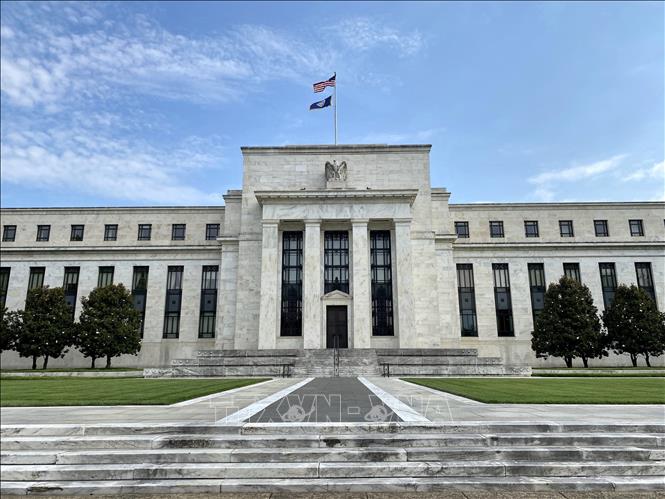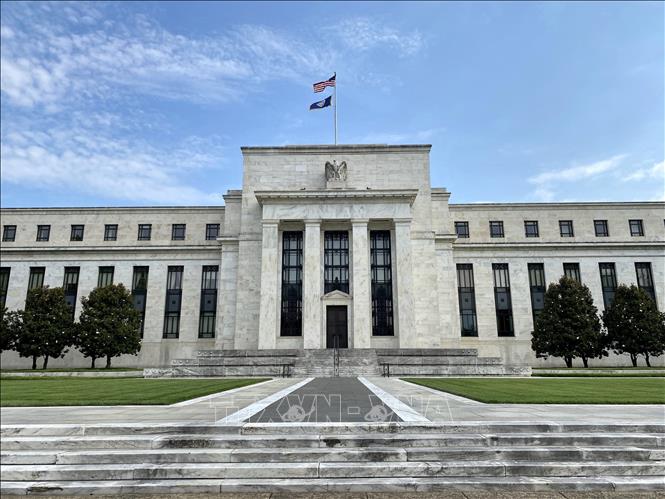Central banks now want to combine their policy of raising key interest rates with a broader, more comprehensive view of prices and the development of the entire economy .

Headquarters of the US Federal Reserve (Fed) in Washington, DC Photo: AFP/TTXVN
The world’s top central banks continued to hike interest rates this week despite cooling inflation. But they have taken a more cautious tone when it comes to their next moves, a sign that the year-long global tightening may be coming to an end.
The US Federal Reserve (FED) and the European Central Bank (ECB) raised interest rates this week as expected, leaving open the possibility of further rate hikes if inflation does not fall, according to Reuters news agency. The Fed raised interest rates by 0.25 percentage points after pausing in June, thereby bringing the federal funds rate, the basis for banks to calculate interest on overnight loans, to a new target range of 5.25% to 5.5% - the highest level in the past 22 years.
The Bank of England is expected to raise interest rates again next week. On July 27, the Bank of Japan opened discussions about plans to end its ultra-loose monetary policy.
While in Europe and the United States, top policymakers have been pushing the idea of raising interest rates to reduce inflation since last year, after a year of implementation, central banks now want to combine that tactic with a broader, more comprehensive view of prices and the overall economy. A more comprehensive approach could allow evidence of lower inflation to show up in economic growth and employment.
This is a shift from policymakers' previous stance, which was that they needed to see real price increases fall to know whether the progress being made was working.
"We want to see moderate or modest economic growth to help ease inflationary pressures," Fed Chairman Jerome Powell said in a press conference on July 26 after the Fed's 11th rate hike. "We want to see continued restoration of the balance of supply and demand, particularly in the labor market. Those pieces need to fit together."
The Fed chairman said it was important to “get inflation back to target without triggering a severe recession that would result in high unemployment.” However, he acknowledged that this was a long way off and there was much work to be done.
Decisions going forward will be made on a meeting-by-meeting basis, and officials can only provide limited guidance on further monetary policy under current conditions, Mr. Powell said.
As for the ECB, President Christine Lagarde said the slight change in wording in its latest policy statement was “not just coincidental or irrelevant,” but represented a change after nine consecutive rate hikes. The decision on whether to pause rate hikes will be discussed at the European Central Bank’s September meeting, as it has been at the US central bank.
“While there are still material risks and inflation could still require further rate hikes, the ECB — like the Fed — is essentially done raising rates,” said Krishna Guha, vice president of ISI at Evercore, in a commentary.
According to Tin Tuc Newspaper
Source































































































Comment (0)